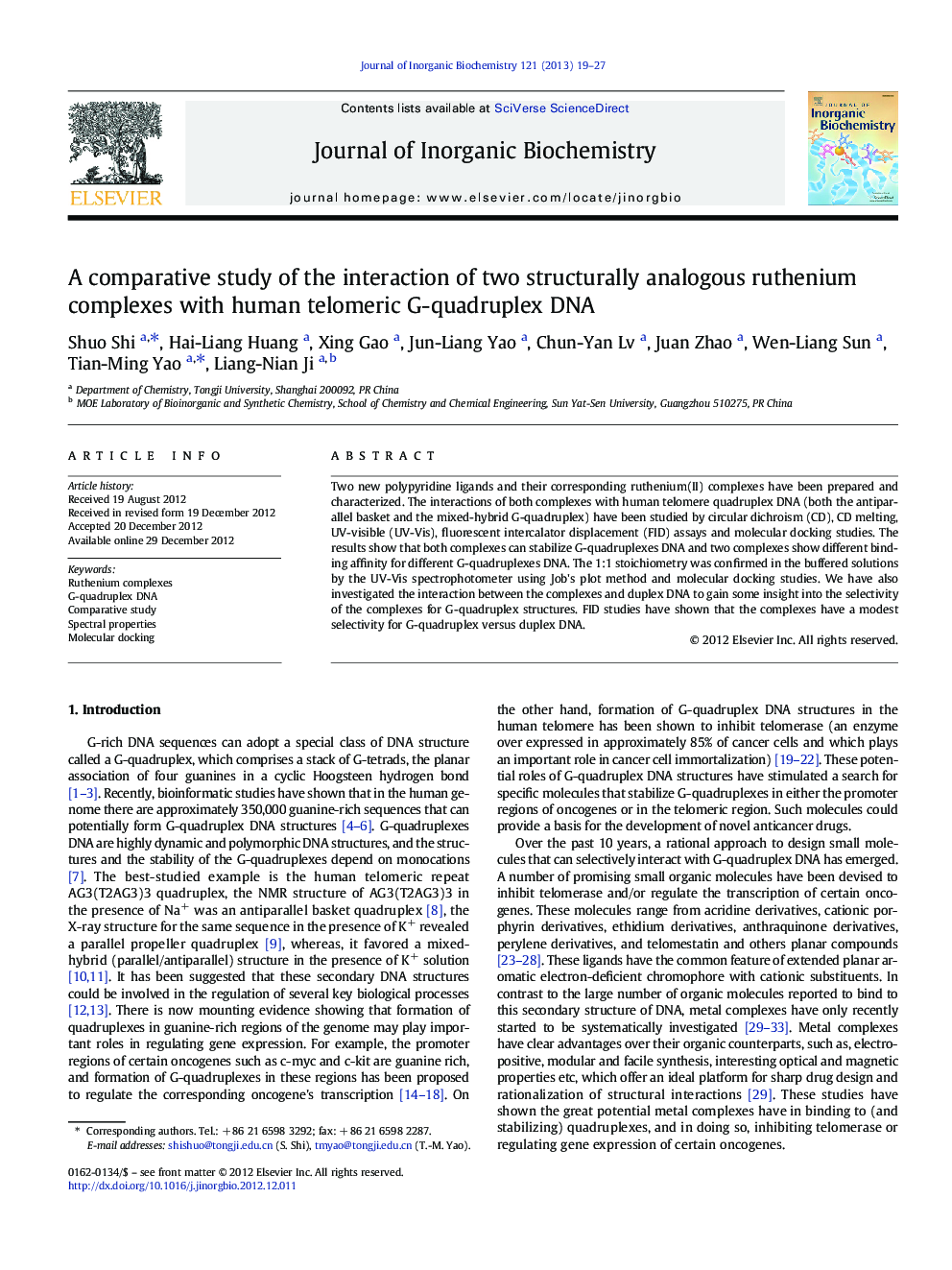| Article ID | Journal | Published Year | Pages | File Type |
|---|---|---|---|---|
| 1316040 | Journal of Inorganic Biochemistry | 2013 | 9 Pages |
Two new polypyridine ligands and their corresponding ruthenium(II) complexes have been prepared and characterized. The interactions of both complexes with human telomere quadruplex DNA (both the antiparallel basket and the mixed-hybrid G-quadruplex) have been studied by circular dichroism (CD), CD melting, UV-visible (UV-Vis), fluorescent intercalator displacement (FID) assays and molecular docking studies. The results show that both complexes can stabilize G-quadruplexes DNA and two complexes show different binding affinity for different G-quadruplexes DNA. The 1:1 stoichiometry was confirmed in the buffered solutions by the UV-Vis spectrophotometer using Job's plot method and molecular docking studies. We have also investigated the interaction between the complexes and duplex DNA to gain some insight into the selectivity of the complexes for G-quadruplex structures. FID studies have shown that the complexes have a modest selectivity for G-quadruplex versus duplex DNA.
Graphical abstractA comparative G-quadruplexes DNA binding of two structurally analogue Ru(II) complexes were explored and explained.Figure optionsDownload full-size imageDownload as PowerPoint slideHighlights► Two new ligands and their corresponding ruthenium(II) complexes were synthesized and characterized. ► A comparative study of the binding of two structurally analogous Ru(II) complexes to G-quadruplexes DNA were explored. ► Modification of the ligands significantly affects the spectral properties and overall DNA-binding behavior of the complexes.
